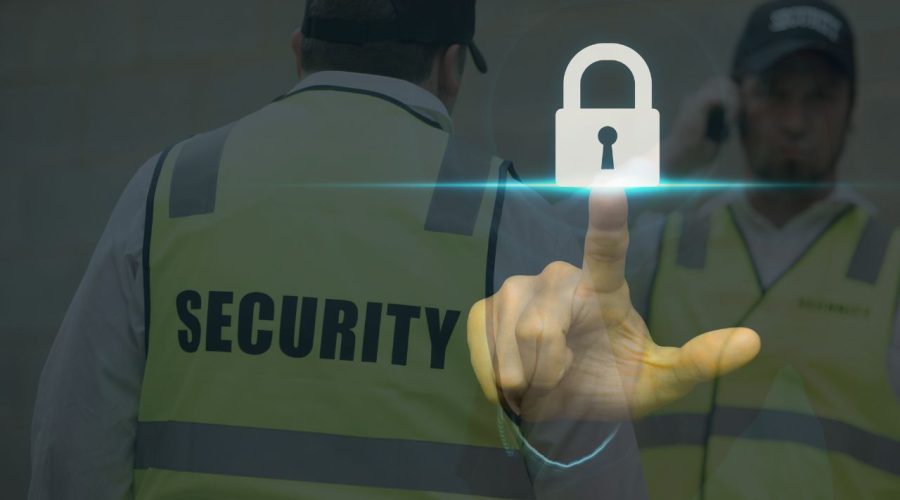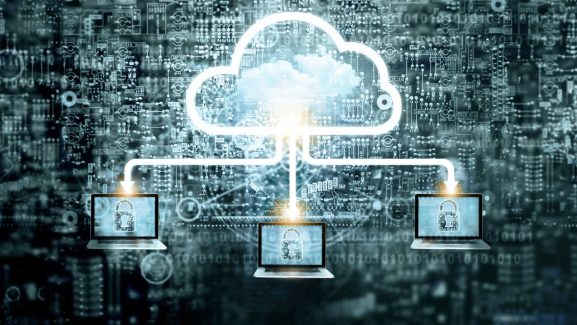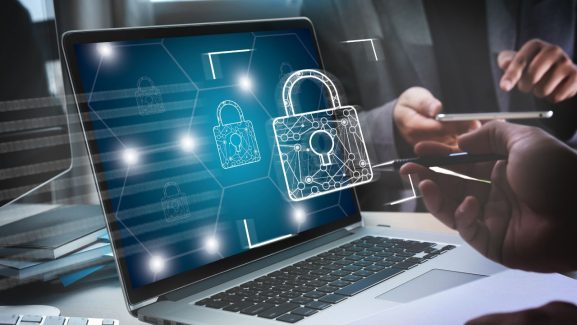Understanding the Role of the Chief Information Security Officer (CISO)
Where data is the lifeblood of organizations today, and cyber threats loom large, the role of the Chief Information Security Officer (CISO) has transcended mere technical oversight. The CISO has evolved into a strategic leader, a crucial voice in the executive suite, and the ultimate guardian of an organization’s digital assets and reputation. This isn’t just a job title; it’s a commitment to safeguarding trust in an era defined by digital vulnerabilities.
In this volatile landscape, the CISO stands as the architect of resilience and the driving force behind a robust security posture. But what exactly does this multifaceted role entail? Let’s delve into the core responsibilities, the essential skills, and the profound impact a capable CISO has on an organization’s success.
What Does a CISO Really Do?
The CISO is to develop and oversee the implementation of an organization’s information security program. This includes protecting systems, networks, and data from cyber threats, ensuring compliance with relevant regulations, and preparing for future risks.
But it’s not just about technology. A skilled CISO bridges the gap between business objectives and security protocols. They act as a translator between the boardroom and the server room, turning complex threats into actionable business strategies.
Key Responsibilities of a CISO Often Include:
- Developing and Implementing Security Strategies: Crafting a holistic security roadmap aligned with business objectives and risk tolerance.
- Risk Management and Assessment: Identifying, analyzing, and mitigating potential security threats and vulnerabilities.
- Security Architecture and Infrastructure: Designing and overseeing the implementation of secure IT systems and networks.
- Incident Response and Disaster Recovery: Establishing plans and procedures to effectively respond to and recover from security incidents and business disruptions.
- Security Awareness and Training: Educating employees on security best practices and fostering a security-conscious culture.
- Compliance and Governance: Ensuring adherence to relevant laws, regulations, and industry standards.
- Vendor Security Management: Assessing and managing the security risks associated with third-party vendors and partners.
- Budget Management: Planning and allocating resources effectively to support security initiatives.
- Threat Intelligence and Analysis: Staying abreast of the latest threats and proactively implementing defenses.
- Building and Leading Security Teams: Recruiting, developing, and managing a skilled team of security professionals.
The CISO is not just a technical expert; they are also a communicator, a negotiator, and a leader. They must be able to translate complex technical jargon into clear and concise language that resonates with both technical and non-technical audiences. They need to build strong relationships across the organization, fostering a culture of shared responsibility for security.

Qualifications and Skills of an Effective CISO
While the path to becoming a CISO can vary, there are common threads in the qualifications and skills that successful leaders share:
Educational Background
Most CISOs hold degrees in computer science, information technology, cybersecurity, or a related field. However, increasingly, those with business or legal backgrounds are rising to the role, especially in regulated industries where governance is critical.
Certifications
- CISSP (Certified Information Systems Security Professional)
- CISM (Certified Information Security Manager)
- CEH (Certified Ethical Hacker)
- CISA (Certified Information Systems Auditor)
- CCISO (Certified Chief Information Security Officer)
These credentials showcase technical expertise and a strong grasp of risk and governance.
Key Skills
- Technical Proficiency: From firewalls and IDS/IPS to cloud security and zero trust architectures.
- Leadership: Motivating teams, aligning departments, and securing executive buy-in.
- Communication: Presenting complex security concepts to non-technical stakeholders.
- Crisis Management: Staying calm and strategic under pressure during cyber incidents.
Why Every Organization Needs a CISO
In an age where data breaches can destroy reputations overnight, the CISO is no longer a luxury it’s a necessity. From Fortune 500 companies to rapidly growing startups, every organization must take a proactive approach to information security.
But what does “proactive” really mean?
It means building a security culture before a crisis hits. It means implementing systems that prevent, detect, and respond to threats in real time. And most of all, it means having leadership at the top who understands the evolving threat landscape.
That’s exactly what a Chief Information Security Officer (CISO) brings to the table.
The Cyber Threat Landscape: Why the CISO Role Is Critical
Cybercrime is no longer just a hacker in a hoodie. Today’s adversaries range from organized crime groups and state-sponsored actors to disgruntled insiders and careless employees. The cost of cybercrime is expected to hit $10.5 trillion globally by 2025. These aren’t just numbers—they represent real business disruptions, legal liabilities, and customer trust lost.
In this context, the CISO acts as the business’s shield bearer. They are the architects behind secure digital infrastructure, the commanders of incident response, and the stewards of compliance and trust.
Here’s a glimpse at what a CISO protects an organization from:
- Ransomware attacks that can lock down operations and demand millions in payment.
- Phishing campaigns that steal credentials and access sensitive systems.
- Insider threats that result in data leaks and sabotage.
- Third-party breaches that occur through vendors with weak security controls.
- Compliance failures that result in costly fines and regulatory actions.
What Makes a Great CISO?
A great Chief Information Security Officer is not just technically savvy—they’re a visionary, a communicator, and a strategist. They know how to balance protection with productivity and compliance with innovation.
Here are a few traits that set top-tier CISOs apart:
- Strategic Thinking: They don’t just respond to threats—they anticipate them.
- Business Acumen: They understand how cybersecurity supports long-term goals.
- Empathy and Influence: They work across departments to build security into the culture.
- Continuous Learning: Cyber threats evolve daily—so must the CISO.
A truly effective CISO leads from both the frontlines and the boardroom.
CISO Career Path: From Analyst to Executive
Becoming a CISO doesn’t happen overnight. It’s a culmination of years of hands-on experience, leadership development, and continuous learning. Here’s a general roadmap:
- Entry-Level Security Roles (e.g., Security Analyst, SOC Analyst)
- Mid-Level Roles (e.g., Security Engineer, Security Architect, Compliance Officer)
- Senior-Level Management (e.g., Security Manager, Director of Information Security)
- CISO
Along the way, it’s essential to build both technical and soft skills. Experience in areas like incident response, governance, risk management, and vendor evaluation is particularly valuable.
to truly understand the weight and breadth of the CISO role, consider the diverse stakeholders they interact with. They report to the highest levels of leadership, often the CEO or the board of directors, providing critical insights into the organization’s risk profile and the effectiveness of its security controls. They collaborate closely with IT teams, ensuring that security is integrated into all aspects of technology infrastructure and operations. They work with legal and compliance departments to navigate the complex web of regulations and contractual obligations. They communicate with marketing and public relations teams to manage security-related communications and maintain public trust. And increasingly, they engage with external partners, industry peers, and even law enforcement agencies to share threat intelligence and collaborate on security best practices.
This extensive network of interactions underscores the CISO’s position as a central figure within the organization, a hub of knowledge and a driver of cross-functional collaboration on security matters. Their ability to build bridges between technical teams and business units is paramount to creating a truly effective and unified security posture.
Want to start your journey to becoming a Chief Information Security Officer? Focus on learning, certifications, and building a strong network. And most importantly—stay curious. Cybersecurity never stands still.

The Future of the CISO Role
The Chief Information Security Officer (CISO) role is not just evolving it’s accelerating into uncharted territory. As organizations expand their digital footprints, the responsibilities of the CISO will continue to stretch far beyond firewalls and phishing filters.
Here are some emerging trends that are reshaping what it means to be a CISO in the years ahead:
1. AI and Machine Learning Integration
CISOs are increasingly expected to harness the power of artificial intelligence—not just to defend, but to predict. AI-driven threat detection, anomaly identification, and automated incident response are quickly becoming standard tools in the CISO’s arsenal.
2. Zero Trust Architectures
Gone are the days of trusting everything behind the firewall. The future is Zero Trust—where no user or device is trusted by default, regardless of their location. The CISO plays a critical role in architecting and enforcing Zero Trust principles across hybrid infrastructures.
3. Cybersecurity as ESG
Environmental, Social, and Governance (ESG) metrics are now factoring in cybersecurity. Investors and consumers are asking tougher questions: How are you protecting data? Are you transparent after a breach? The CISO is now a steward of brand trust and corporate responsibility.
4. Global Regulation and Data Sovereignty
From GDPR to CCPA to China’s PIPL, data protection laws are evolving rapidly and becoming more complex. A future-ready CISO must have a global mindset—one who understands how to navigate cross-border regulations and manage data sovereignty issues.
5. Cloud-Native Security
As more businesses shift to AWS, Azure, and GCP, CISOs need to secure dynamic, cloud-native environments. It’s not just about securing static servers anymore—it’s about protecting containers, serverless functions, APIs, and distributed workloads.
6. CISO on the Board?
There’s a growing call for security leadership to have a seat at the boardroom table. Many organizations are now considering giving CISOs voting power or creating board-level cybersecurity committees. The role is maturing and with it, the expectations.

Why the CISO Matters More Than Ever
Cybersecurity is no longer a back-office function. It’s a business enabler. And at the center of it all is the Chief Information Security Officer (CISO) a role that combines deep technical skill with strategic foresight and executive influence.
The CISO is your company’s digital bodyguard, risk strategist, compliance expert, and innovation driver. In today’s world, where digital transformation moves at lightning speed and cyber threats evolve by the hour, no modern business can afford to go without strong cybersecurity leadership.
Explore CISO services, or take your own career to the executive level, now is the time to act.
the Chief Information Security Officer is far more than just a job title. It represents a critical function within modern organizations, a linchpin of digital trust, and a driving force behind resilience in an increasingly perilous digital world. The CISO is a strategic leader, a technical expert, a skilled communicator, and a tireless advocate for security. Their ability to navigate the complexities of the threat landscape, build strong security teams, and foster a security-conscious culture is essential for protecting an organization’s most valuable assets and ensuring its long-term success. As technology continues to evolve and cyber threats become more sophisticated, the importance and impact of the CISO role will only continue to grow.
Considering a career in cybersecurity leadership or looking to strengthen your organization’s security team? eStreet Security can provide valuable insights and support. Visit us at www.estreetsecurity.com to learn more about our services and how we can help you achieve your security goals.



